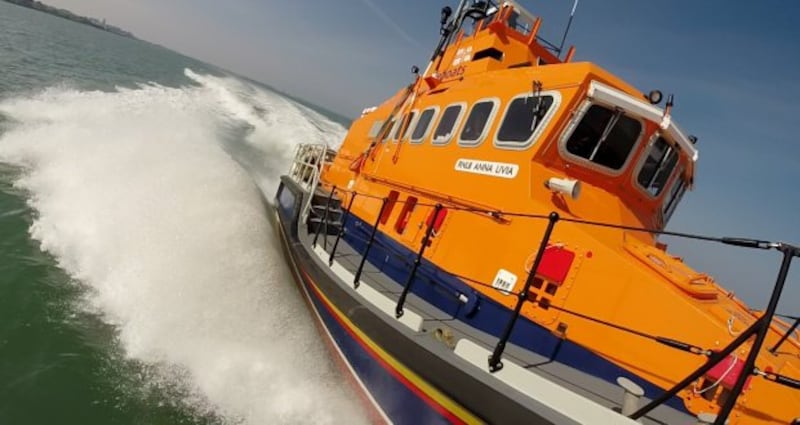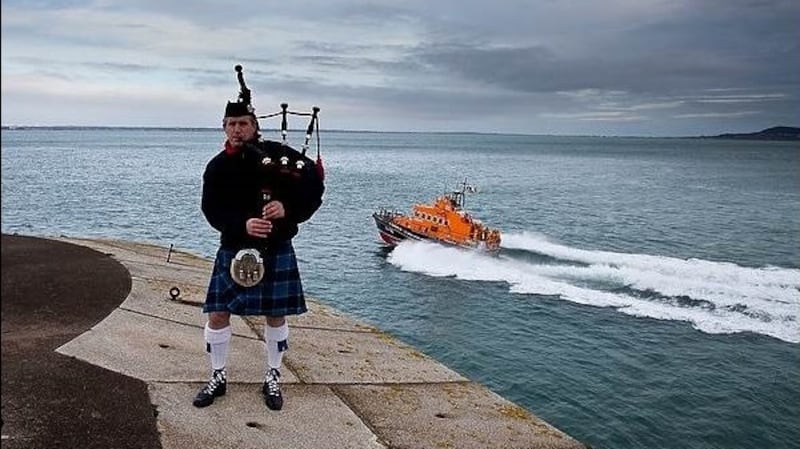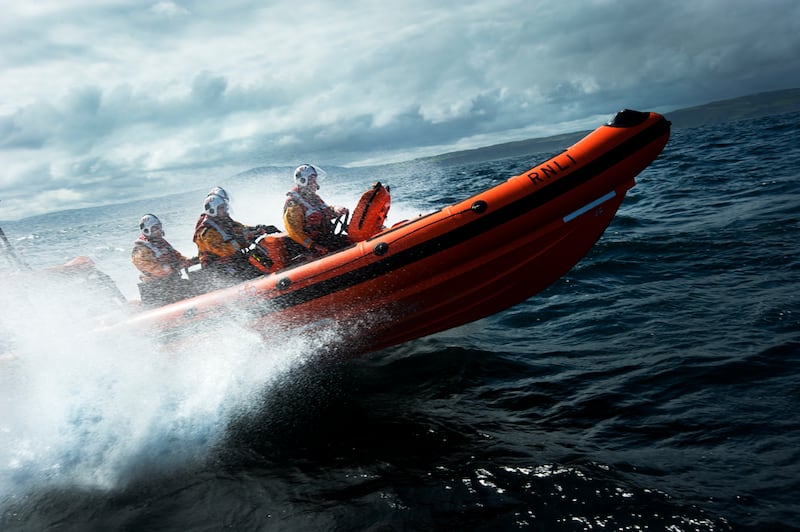On June 12th, I set off on my bike from East Pier lighthouse, Dún Laoghaire, Co Dublin around Ireland in a clockwise direction. My aim is to stop at lighthouses and Royal National Lifeboat Institution (RNLI) stations along the way – and blog about it as I go.
I spend 28 days cycling through our coastal landscapes: over 2,500 miles; 17 counties; two punctures (a complete blowout in Kinsale, a puncture in Westport); one snapped gear cable; many pressure sores; and a broken bike rack on day one.

The cycling is secondary, though; the true purpose of the trip is to raise funds for the RNLI, a charity funded by donations from the public, and to draw attention to its Respect The Water campaign. Its volunteer crew members are dedicated and well-trained, and most have full-time jobs as well as making this considerable commitment.
The RNLI and the Irish Coast Guard, although different organisations, are in constant contact. When the RNLI receives an emergency call from the coast guard, the RNLI launching authority decides whether to launch two lifeboats, one or perhaps none.
Sometimes a decision is made to “stand down” and some callouts or “shouts” require a multi-agency approach. Des Davitt, the Wicklow RNLI station launching authority, stresses that “whatever the weather, even if it’s force 9 or 10, they’ll still go out if someone needs to be rescued. It may take a bit longer but we’ll still go out.”
Five lives
This has been the worst year in the Irish Coast Guard's history, with the loss of five lives: Caitriona Lucas, Dara Fitzpatrick, Mark Duffy, Paul Ormsby and Ciarán Smith.

Prior to this, the last person from these rescue services to lose their life in the line of duty was Fintan Sinnott of Kilmore Quay RNLI, in 1977. Sinnott is still mentioned by crew members around the coast, but now the loss of Rescue 116 and its crew is the most talked-about maritime disaster. Everywhere I cycle, members of the public have theories as to what happened; some are well-informed, some not.
At each RNLI station, I get a sense of the workers’ urgent need to find Paul Ormsby and Ciarán Smith – for their families, friends and colleagues. Kevin Honeyman, an Achill man based in Fenit RNLI in Co Kerry, tells me that he and others walk shores, conducting their own personal searches, using that vital local knowledge of cliffs and currents, caves and rocks just below the surface, hoping to locate the two men.
In the 1990s, there were just three RNLI stations on the west coast – Aran Islands, Aranmore and Valentia. Now there are several more, due to the work of local campaigners and concerned citizens in the wake of maritime tragedy. Without Sheila O’Driscoll, there would be no Castletownbere RNLI; without Jack Higginbotham there would be no Wexford RNLI.
Stunning locations
I use lighthouses as landmarks: though often in disrepair, they are spectacular buildings in stunning locations. Galley Head, Loop Head, Old Head of Kinsale, St John’s Point (two of them: one in Down where Brendan Behan spent some time, the other in Donegal), Blacksod, Fanad, Hook, Ballycotton and Wicklow Head represent some of the great lighthouses of Ireland.
Gerald Butler grew up in Galley Head, one of 15 children. I ask him if he had a tough childhood, isolated out here. Immediately he dismisses the idea: he played football, cowboys and indians, caught human-sized pollock and raced up the steep stairs at his father’s request to “go up and light that”.

Gerald would still be a full-time lighthouse-keeper had the microchip not been invented. I get this sense from all of the lighthouse-keepers I meet, now called “lighthouse attendants”, a term which does no justice to their considerable skills.
I meet Vincent Sweeney at Blacksod. Though it’s several months since Rescue 116 crashed, he still fields calls from the media. Several come in while I am there. “Any more debris found?” is one of the more typical requests. He answers questions politely but it’s clear he’d rather not.
He tells me about the pink Blacksod granite cut from nearby and shows me the pink hue of the stone. He tells me how his father Ted Sweeney’s weather report determined the date of the D-Day Landings, which were postponed by one day until June 6th because of a cold front passing through Iceland, Blacksod and onto the beaches of Normandy 24 hours later.
Then up in the tower we celebrate the light’s 151st birthday: it was first lit on June 30th, 1866.
Brutal moments
The physical challenge of cycling around the country is nothing compared with the work that the rescue services do. That said, there are some brutal moments on the bike: averaging 10km/h coming around An Chorráin into horrible northerly winds; cycling Sheep’s Head and the Beara Peninsula in 30-degree heat; four days of rain on the trot; a car swerving into me in the Burren; a bird flying into my head; a bee stinging my side; and painful hills at Kilcrohane, Co Cork, Torr Head, Co Antrim and the Gap of Mamore, Co Donegal – but all with spectacular vistas at the top.

Highlights include RNLI personnel Colley, Damien, Michael and Niamh seeing me off from East Pier lighthouse in Dún Laoghaire at 6am; standing on Sheep’s Head in Co Cork; coffee at The Diamond Rocks, Kilkee, Co Clare; passing carefully constructed bonfires on the eve of July 12th; viewing memorials to fishermen lost at sea in every coastal town; coming full circle via Howth; meeting selfless RNLI crew everywhere; and the absolute privilege of seeing the coast of the island I love on warm, sunny days.
For the full blog or to donate, go to: https://give.everydayhero.com/ie/the-lighthouse-cycle



















